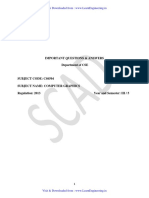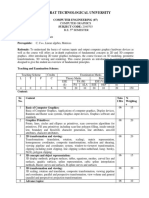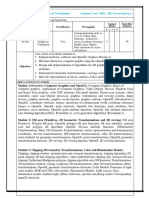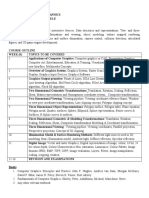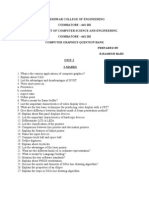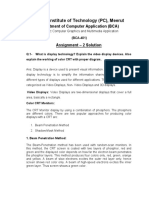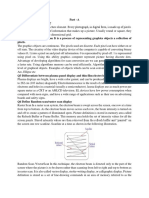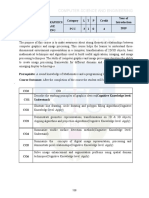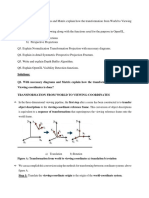0% found this document useful (0 votes)
43 views2 pagesComputer Graphics Code: CS501 Contact: 3L Credits: 3 Allotted HRS: 36L
This 3-credit, 36-hour course on computer graphics has four main objectives: 1) Understanding how graphics are created in computers, 2) Using colors for different objects, 3) Rescaling, shifting, skewing, and rotating graphical objects, and 4) Animating simple graphics. The course outcomes are to understand the foundations, concepts, and software used for computer graphics. It is divided into four modules that cover topics like displays, scan conversion algorithms, 2D and 3D transformations, viewing and clipping, curves, and hidden surface removal.
Uploaded by
Srabani KunduCopyright
© © All Rights Reserved
We take content rights seriously. If you suspect this is your content, claim it here.
Available Formats
Download as DOC, PDF, TXT or read online on Scribd
0% found this document useful (0 votes)
43 views2 pagesComputer Graphics Code: CS501 Contact: 3L Credits: 3 Allotted HRS: 36L
This 3-credit, 36-hour course on computer graphics has four main objectives: 1) Understanding how graphics are created in computers, 2) Using colors for different objects, 3) Rescaling, shifting, skewing, and rotating graphical objects, and 4) Animating simple graphics. The course outcomes are to understand the foundations, concepts, and software used for computer graphics. It is divided into four modules that cover topics like displays, scan conversion algorithms, 2D and 3D transformations, viewing and clipping, curves, and hidden surface removal.
Uploaded by
Srabani KunduCopyright
© © All Rights Reserved
We take content rights seriously. If you suspect this is your content, claim it here.
Available Formats
Download as DOC, PDF, TXT or read online on Scribd
/ 2










